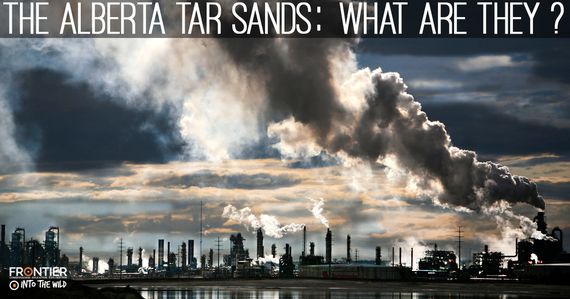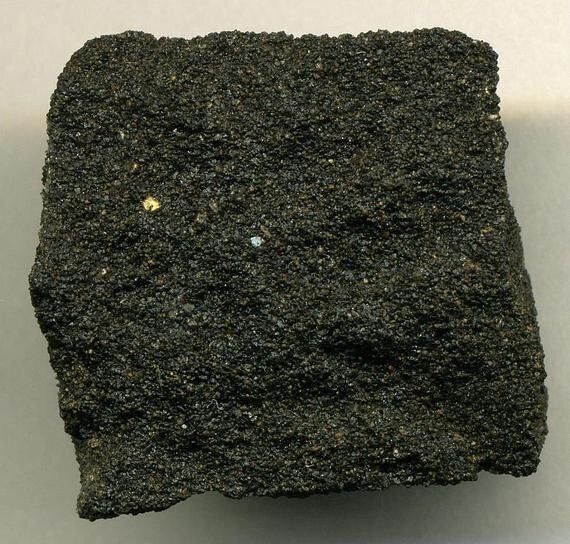
So much attention is paid in environment news to the oil industry but one section of it is being overlooked. Canada is home to the Alberta Tar Sands, a vast area of land devoted entirely to inefficiently gathering the precious oil and leaving a sticky trail of destruction in its wake.
The tar sands of Alberta, often referred to as "oil-sands", collectively take up 142,200 square kilometres; about a third of the province. These consist of 3 mines; the Athabasca, Cold Lake and Peace River. The vast sands are created by removing what's referred to as "overburden". This is the excavation of 30-50m of topsoil, and the removal of any and all habitats with it, to expose the sand. These are then mined for bitumen; a degraded, viscous type of oil that is later refined into synthetic crude oil.
Legislation dictates that companies whose mining would disturb or destroy habitats cannot be mined unless said habitats are proven able to recover to their natural state, or be restored to an "equivalent land capability" afterwards. However, equivalent land capability has become somewhat of a loophole on the oil sands as it defines agricultural land of equal capability to arboreal land in its land use. This means that although some oil-sand mine land had been restored to wood bison pasture, the muskeg and boreal forest that was originally there had a much higher conservation significance, which is now lost.

Flickr | James St. John
There are two types of extraction process. Open-pit is the more environmentally damaging as this is sand accessible by the removal of overburden, while in situ requires more energy as those deposits are too far down and need deep steam assisted wells. Once collected the sand is transported to bitumen recovery facilities to be separated.
The separation process consists of submerging bitumen the sand into a mixture of hot water, caustic soda and other chemical compounds and transporting it to refineries via pipeline. This slurry is then pumped into vessels that allow the silt to sink and the oil to rise to the surface, which is then skimmed off the top.
The remaining waste slurry mix (sediment, chemicals and residual bitumen, called tailings) is then pumped into vast reservoirs. These huge tailings ponds can be skimmed further for their residual bitumen, but also act as part of the reclamation process; allowing the water to biologically restore itself. However, this water is highly toxic and their toxicity was publicly revealed in 2008 when a flock of 1,600 ducks landed on a tailings pond and died, sparking more outcry from environmentalists.

Flickr | Howl Arts Collective
The impact stretches further still. Initial disturbance from overburden removal displaces wildlife from much needed winter feeding grounds, and pollutants from the tailings ponds leach into waterways. Where the boggy muskeg stood the water table often reaches the surface, maximising the chance for toxins and carcinogens from tailings to enter the Athabasca River. Studies have also revealed deformities and abnormalities in fish local to the area, bringing cause for concern amongst indigenous communities who depend on the river for food and drinking water.
In addition to its environmental damage, bitumen synthetic crude is also extremely inefficient to refine. It takes around 5000 cubic ft of natural gas to produce one barrel. Alberta, Canada holds around 70% of the world's bitumen and the oil sands produce 2.4million barrels per day between them. An Alberta Government study confirmed oil derived from oil-sand produces 12% higher emissions than regular crude, making it the dirtiest energy source on the planet. This is alarming at the current rate, but even more so when the sands are projected to turn out almost 4million barrels per day by 2020 and 5million by 2030.
Previous bids for a pipeline to move this oil through America have been thwarted in the past, but now that Energy Transfer Partners' pipeline is back on the table Keystone XL is looking like a viable candidate; a pipeline synonymous with indigenous rights violations.

Wikimedia Commons | Qyd (Own work) [CC BY-SA 3.0 (http://creativecommons.org/licenses/by-sa/3.0) or GFDL (http://www.gnu.org/copyleft/fdl.html)]
The industry's inefficiency and environmental impact makes it clear that this is yet another desperate attempt to make a quick-buck as companies who invest in limited energy resources either have a problem with delayed gratification or have insurmountable greed. However, continued expansions of Alberta's oil sands are projected to breach Canadian climate agreements and emissions targets. In conjunction to this the advancement of renewables in functionality, affordability, capacity and accessibility will make operations such as this obsolete. It's just a question of how long we have to achieve it.
By Thomas Phillips - Online Journalism Intern
Frontier runs conservation, development, teaching and adventure travel projects in over 50 countries worldwide - so join us and explore the world!
